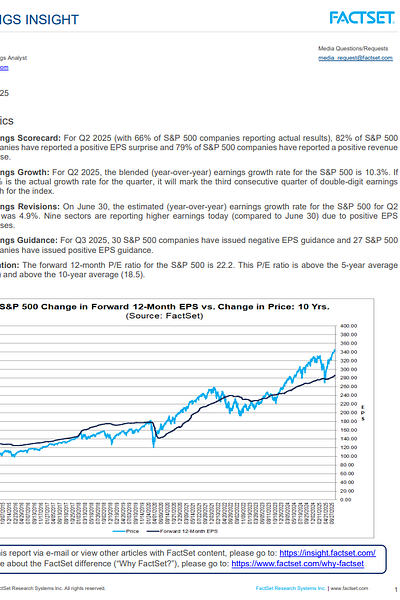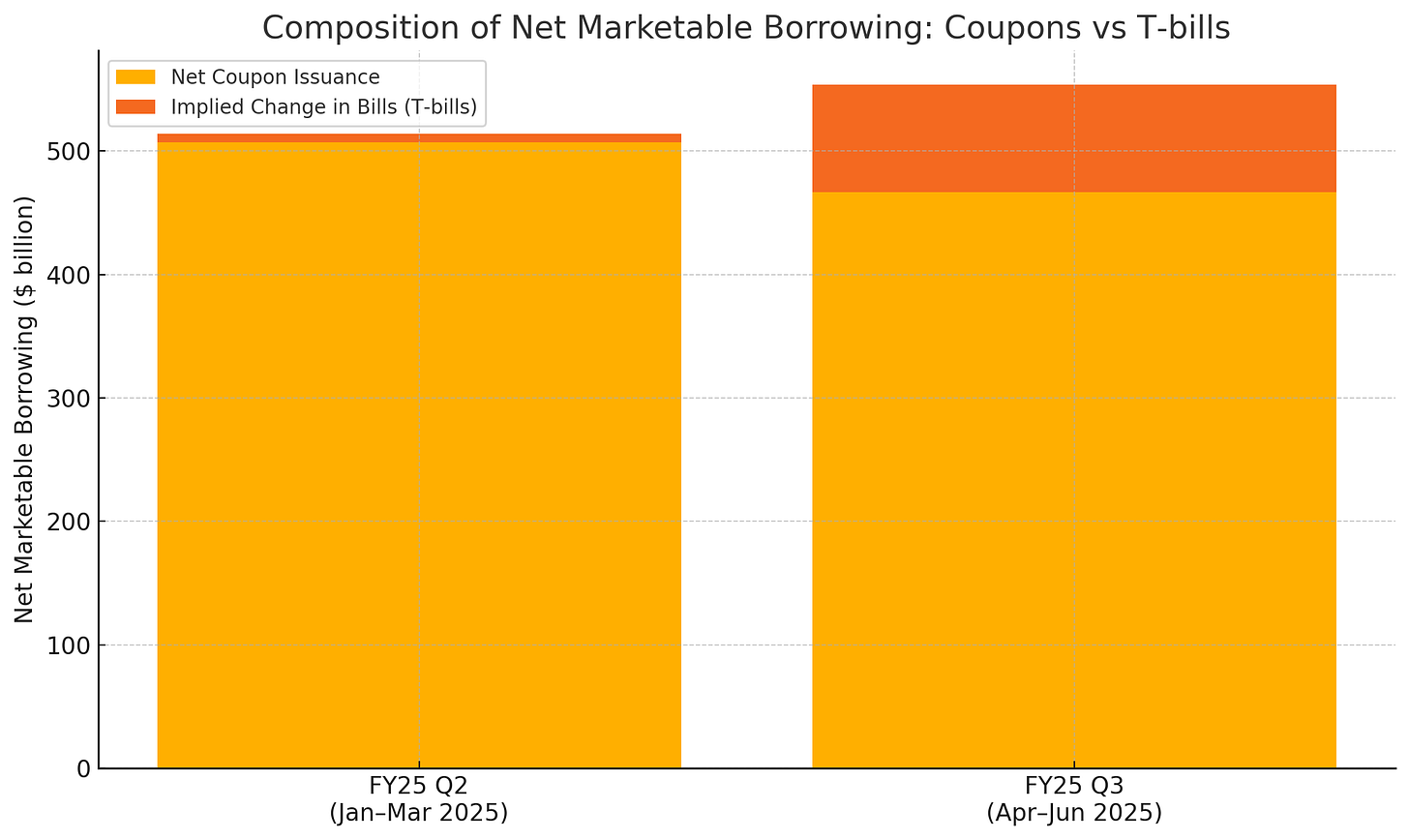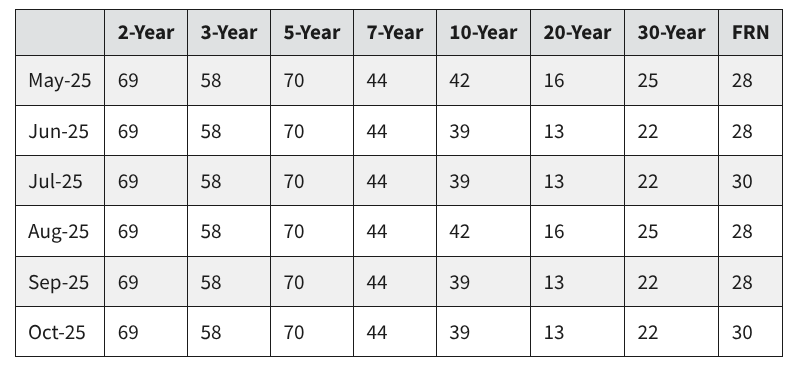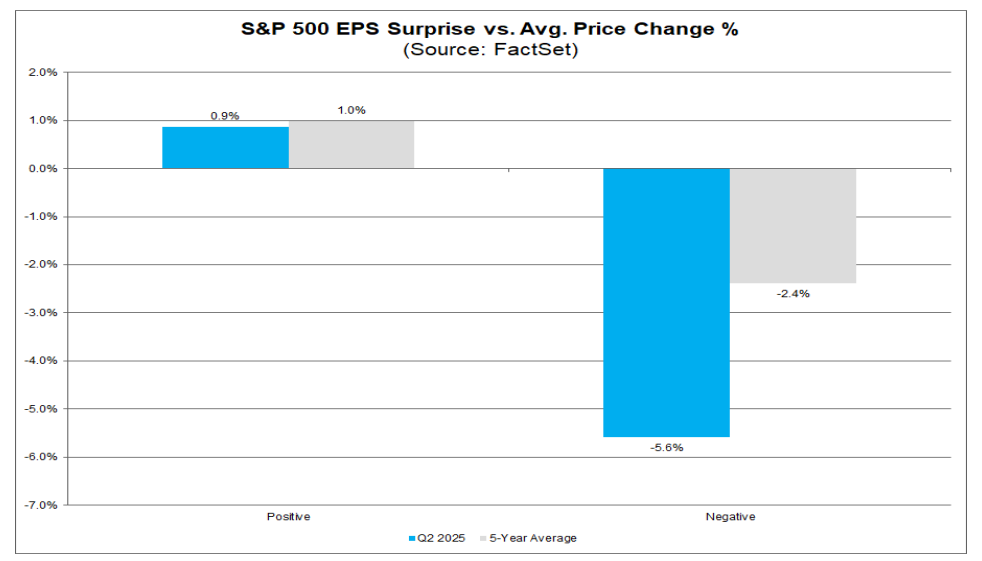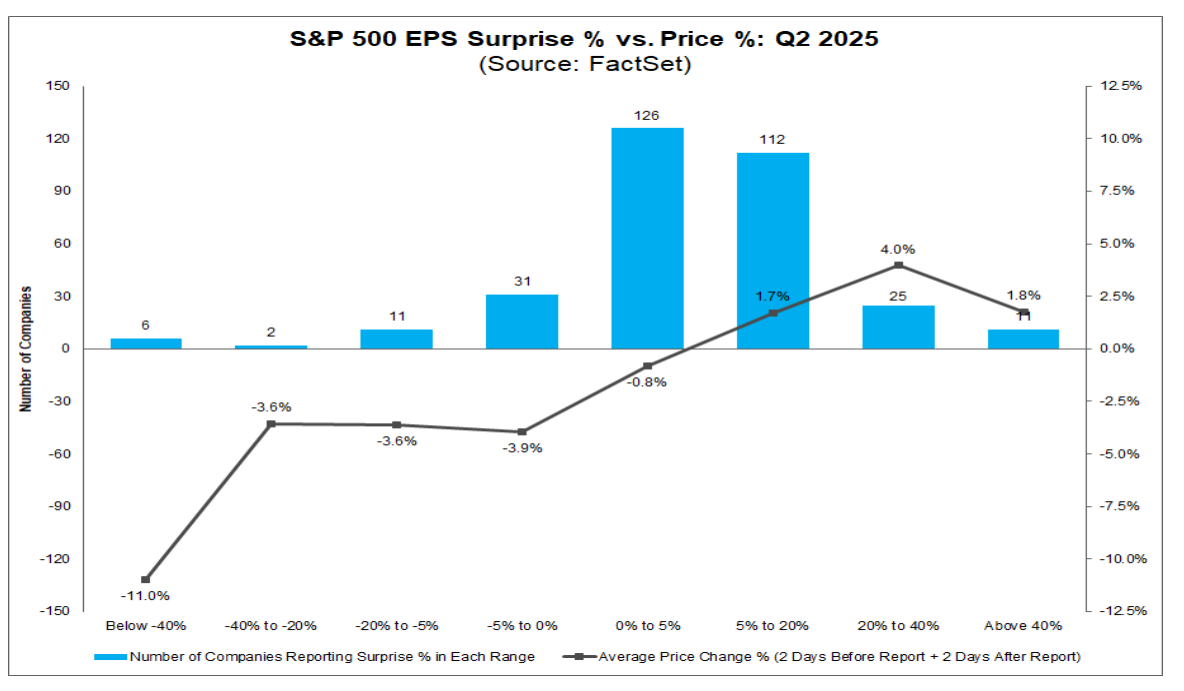[Intel Report] Fiscal expediency and macro landscape
Updates in the perspective and strategies
Table of contents:
Introduction.
The treasury's short-term gambit.
Politics of debt management.
The august 2025.
The risks of a shortened duration.
Market implications and monetary policy interplay.
An unofficial accord.
A new form of market support.
Saturating the money market.
Fundamental justification for the equity rally.
Broad-based and resilient growth.
Operational efficiency.
Rewarding shareholders and investing for the future.
Outlook, positioning, and potential volatility.
Smart money or late money?
Key macro catalysts.
Strategic synthesis and investment directions.
Introduction
The current investment landscape is defined by a significant paradox. On one hand, U.S. fiscal policy, driven by political expediency, is increasingly reliant on short-term debt, introducing structural risks into the financial system. On the other hand, corporate America exhibits a level of fundamental health—in terms of profitability, balance sheet strength, and investment—that is arguably the strongest in a decade. This report dissects this dichotomy, arguing that while the Treasury's strategy creates a stable, low-volatility environment in the near term, it is the robust corporate fundamentals that provide the true justification for a continued bullish stance on U.S. equities.
The U.S. Treasury, under the leadership of Scott Bessent, has made a pronounced and politically timed shift to finance the nation's substantial deficit primarily through the issuance of short-term Treasury bills. This strategy, which mirrors the very policy Bessent criticized under his predecessor, is designed to avoid placing upward pressure on long-term interest rates ahead of an election cycle. By holding auctions for medium and long-term debt steady and absorbing all financing variability with T-bills, the Treasury is effectively suppressing bond market volatility. This action, coupled with an enhanced bond buyback program that functions as a de facto form of quantitative easing managed by the fiscal authority, has created an environment of artificially low volatility that is highly supportive of risk assets.
However, this policy is not without considerable long-term risks. It shortens the average maturity of U.S. debt, increases rollover frequency, and necessitates a larger cash buffer to guard against market disruptions, making the nation's finances more vulnerable to future interest rate shocks. Today we detail the mechanics and risks of this strategy, concluding that it is a temporary, politically motivated gambit that trades long-term stability for short-term calm.
Juxtaposed against this precarious macro backdrop is a corporate sector displaying exceptional fundamental strength. The Q2 2025 earnings season has seen widespread beats on both earnings and revenue, with the S&P 500 on track for its third consecutive quarter of double-digit earnings growth. Crucially, this strength is broad-based and is supported by historically high profit margins, which serve as the clearest evidence of a technology-driven productivity boom. Furthermore, corporate balance sheets are the healthiest they have been in nearly a decade, with leverage ratios at multi-year lows. This financial strength is fueling a virtuous cycle of record shareholder returns through buybacks and dividends, alongside a surge in capital investment, particularly in artificial intelligence infrastructure. Check more about all of this here:
Another critical insight highlighted is the specific set of risks stemming from fiscal policy, alongside a detailed assessment of corporate fundamentals and a strategic roadmap for investors. While seasonal headwinds in August introduces short-term volatility and encourage market consolidation, the underlying fundamentals support maintaining an overweight position in U.S. equities. The analysis concludes with a recommendation to prioritize high-quality large-cap companies with robust balance sheets and to focus on sectors poised to benefit from accelerating AI investments and a revival in capital markets activity.
The treasury's short-term gambit
The foundational element of the current market landscape is a deliberate and politically motivated debt issuance strategy from the U.S. Department of the Treasury. This policy choice, centered on an acute reliance on short-term financing, has implications for interest rates, market stability, and the interplay between fiscal and monetary authorities. Understanding the mechanics, motivations, and inherent risks of this strategy is important for formulating a coherent investment thesis for the coming quarters. It is a policy that prioritizes near-term market calm over long-term fiscal prudence, creating a unique set of opportunities and vulnerabilities for investors.
Politics of debt management
The current U.S. Treasury debt management strategy is steeped in a notable political irony that provides a crucial lens through which to view its motivations. The department, now led by Treasury Secretary Scott Bessent, is actively pursuing a policy of funding the government's deficit with short-term Treasury bills. The explicit goal is to avoid placing upward pressure on long-term interest rates, a move that is particularly convenient in a pre-election environment where higher mortgage and borrowing costs would be politically damaging. This approach is the very strategy for which Bessent was a vocal critic of his predecessor, Janet Yellen.
Under Secretary Yellen, the Treasury significantly increased its reliance on short-term securities, with some analyses indicating a shift of approximately 30% of government borrowing to the short end of the curve. Critics at the time, including Bessent, argued that this approach masked the severity of the federal deficit problem by taking advantage of temporarily lower short-term rates, while setting up a dangerous "ticking time bomb" of future refinancing risk at potentially much higher rates. The concern was that this short-term financing was a politically expedient maneuver to keep interest rates artificially low during the Biden administration's term, which could backfire and create a market crisis for the subsequent administration.
Now, in a striking reversal, the Bessent-led Treasury is executing the exact same playbook. The official justification for the policy is that the yields on long-term bonds are currently too high, making short-term financing a more cost-effective option. However, the timing and the direct contradiction of previous stances strongly suggest that the motivation is less about optimal, long-term debt management and more about short-term political calculus. By preventing a surge of long-term bond issuance from roiling the market and pushing up borrowing costs for consumers and businesses, the Treasury is engineering a period of financial calm ahead of the elections. This context is critical for investors, as it implies that the current state of suppressed bond market volatility is an intentional policy outcome that may not persist once political calendars change, potentially unwinding rapidly and revealing the underlying fiscal fragility it currently obscures.
The august 2025
The Treasury's strategic pivot toward short-term debt is not a matter of speculation; it is explicitly detailed in its latest official communications. The Quarterly Refunding Statement for August 2025 provides a clear and quantitative confirmation of this policy. The announcement states unequivocally that the Treasury anticipates maintaining nominal coupon and FRN auction sizes for at least the next several quarters. This means that the supply of medium-term notes (2, 3, 5, 7, and 10-year) and long-term bonds (20 and 30-year) will remain static, despite enormous government financing needs.
The scale of these financing needs is substantial. For the July – September 2025 quarter alone, the Treasury projects it will need to borrow $1.007 trillion in privately-held net marketable debt. To meet this demand without increasing long-term issuance, the Treasury will rely exclusively on adjusting the auction sizes of short-term T-bills and, if necessary, cash management bills. This is not a temporary adjustment but a sustained strategy. Projections from primary dealers—the large financial institutions that underwrite and trade directly with the Treasury—indicate a broad expectation that increases in coupon issuance will not occur until 2026 or later.
This policy is already having a measurable impact on the composition of U.S. public debt. Currently, T-bills account for approximately 20% of the total outstanding U.S. Treasury debt stack. Financial analysts, such as those at T. Rowe Price, project that this sustained reliance on short-term funding will push that figure into the 23% to 25% range in the coming quarters. This represents a significant shortening of the overall duration of U.S. government liabilities, concentrating a larger portion of the nation's debt into instruments that must be refinanced within one year.
The risks of a shortened duration
This strategic reliance on short-term financing, while politically convenient, is not without significant structural risks. The Treasury's own expert advisory panel, the Treasury Borrowing Advisory Committee (TBAC), has extensively analyzed the consequences of such a policy. Their findings highlight a trade-off between near-term cost savings and long-term financial fragility.
The most direct consequence is the creation of a shorter debt maturity profile. An increased share of T-bills inherently means a larger portion of the total national debt must be refinanced annually. This leads to larger and more frequent debt rollovers, exposing the government's finances to fluctuations in short-term interest rates. While the TBAC notes there is little evidence that larger rollovers are inherently unstable, they do necessitate a more cautious approach to cash management.
Specifically, a higher share of maturing debt requires the Treasury to maintain a larger cash balance in its operating account, the Treasury General Account (TGA). The Treasury's stated cash management policy is to hold a balance sufficient to cover one week of outflows, a figure that includes the gross volume of maturing marketable debt. As the amount of short-term debt increases, this required cash buffer must also grow to protect against a potential, temporary loss of market access during a period of financial stress. The TBAC estimates that a 5% increase in the T-bill share of total debt would require the TGA to be, on average, $90 billion larger. This larger cash balance must itself be financed through additional debt issuance, creating a feedback loop.
Furthermore, a greater reliance on T-bills introduces higher volatility into the government's deficit financing. T-bills generally offer lower average borrowing costs over the long term because investors do not demand a significant term premium for holding them. However, this benefit is highly dependent on the level of term premia, which can be volatile and difficult to observe. More importantly, financing with short-term debt means that debt service costs are subject to frequent rate resets. This makes the federal budget more sensitive to monetary policy and short-term market sentiment, increasing the volatility of interest expense, a major component of government outlays. The TBAC has historically recommended a T-bill share averaging around 20% as a prudent trade-off between cost and volatility, a level the Treasury is now set to exceed.
Market implications and monetary policy interplay
The Treasury's debt management strategy does not operate in a vacuum. Its decision to flood the market with short-term paper while constraining the supply of long-term bonds has ripple effects across the financial system. These actions directly influence the environment in which the Federal Reserve conducts monetary policy, creating a dynamic of implicit coordination that is highly supportive of risk assets in the near term. This interplay, which includes the deployment of new market stabilization tools, is actively suppressing the natural pricing of risk in the bond market, masking underlying fiscal imbalances.
An unofficial accord
While the U.S. Treasury and the Federal Reserve are formally independent entities with distinct mandates—the Treasury managing federal finances and the Fed managing monetary policy for price stability and maximum employment—their actions in the current environment suggest a powerful, albeit unofficial, coordination. The Treasury's strategy of concentrating debt issuance at the short end of the yield curve is providing the Federal Reserve with critical breathing room to conduct its policy.
By deliberately withholding a deluge of new long-term bonds from the market, the Treasury is preventing a supply-driven surge in long-term yields. Such a surge would represent a form of market-driven financial tightening, potentially forcing the Fed to adopt a more dovish stance than it otherwise would to offset it. This dynamic allows the Federal Reserve to maintain its current modestly restrictive policy stance without the bond market dictating its next move. At its July 2025 meeting, the Federal Open Market Committee decided to maintain the federal funds rate at its target range of 4.25% to 4.50%, citing moderating economic growth but still-solid labor markets. The Treasury's actions make this data-dependent, "wait-and-see" approach more tenable by mitigating upward pressure on the long end of the yield curve, which is more impactful for broader economic activity through mortgage rates and corporate borrowing costs. This functional relationship, where fiscal debt management creates a more stable operational environment for monetary policy, amounts to a passive coordination that benefits both institutions' near-term goals.
Here the transcription of Chair Powell’s Press Conference July 30, 2025:
A new form of market support
A crucial and relatively new element in this coordinated market management is the Treasury's expanded bond buyback program. In recent months, the Treasury has conducted its largest buyback operations in decades, repurchasing tens of billions of dollars in older, off-the-run securities to bolster liquidity in the secondary market. These operations, which are being considered for further expansion, particularly in the 10- to 30-year maturity buckets, serve a dual purpose that extends far beyond simple liquidity enhancement.
This mechanism has evolved into a powerful market stabilization tool. Federal Reserve Chairman Jerome Powell has acknowledged that in the event of significant market turbulence, the Treasury could use these buybacks to directly support bond prices and contain yields. This is a profound development. It provides a backstop for the bond market that is managed by the fiscal authority, not the monetary authority. This allows for market intervention to occur without the Federal Reserve having to resort to another politically contentious and balance-sheet-expanding round of Quantitative Easing.
Functionally, the Treasury buying its own bonds to support prices has a similar effect to the Fed doing so. However, by framing it as prudent debt management conducted by the Treasury, the action is depoliticized and avoids the controversy associated with Fed interventions. For investors, this represents a significant structural shift: the creation of a new, less visible put under the bond market, which reduces tail risk and further contributes to the suppression of volatility.
Saturating the money market
The strategy of financing the government through a flood of T-bill issuance is not without its own set of risks and consequences. It fundamentally increases the financial system's reliance on the money market, a sector designed for short-term cash management, to fund the long-term obligations of the U.S. government.
Currently, the primary absorbers of this massive T-bill supply are money market funds (MMFs), which have seen immense inflows as investors seek higher yields than those available in traditional bank deposits. Analysts and primary dealers have indicated that MMFs have ample capacity to digest the new supply, at least for now. The weighted average maturity of MMFs is well below regulatory limits, giving them room to take on more Treasury debt. This has created a symbiotic relationship: the Treasury needs a reliable buyer for its short-term debt, and MMFs, flush with cash, need a safe, liquid asset that yields more than the Fed's Overnight Reverse Repurchase facility.
However, this deep dependency creates a potential point of failure. The stability of this arrangement hinges on the continued flow of cash into MMFs. An unexpected economic or financial shock that triggers large-scale redemptions from MMFs could create a sudden liquidity crisis. Such an event could disrupt the Treasury's ability to smoothly roll over its massive and growing stock of short-term debt, potentially forcing it to pay significantly higher interest rates or causing a failed auction—a catastrophic event for financial markets. The saturation of the market with T-bills also exerts a gravitational pull on yields across the curve. By providing a vast supply of safe, high-yielding short-term assets, it can reduce the urgency for investors to move further out on the duration spectrum, potentially putting downward pressure on the yields of medium and long-term bonds. This effect helps the Treasury achieve its goal of containing long-term rates but further distorts the natural pricing of duration risk in the market.
Fundamental justification for the equity rally
While the macroeconomic policy environment has been engineered to suppress volatility and support asset prices, the sustained rally in U.S. equities is not merely a product of this financial engineering. A deeper analysis reveals that the market's performance is fundamentally justified by the exceptional health of corporate America. Across a wide range of metrics—from earnings and profitability to balance sheet strength and capital allocation—S&P 500 companies are exhibiting a level of resilience and operational excellence that provides a robust foundation for current and future valuations. This underlying strength is the most compelling argument for a continued bullish stance on the asset class.
Broad-based and resilient growth
The Q2 2025 earnings season has decisively demonstrated the resilience of corporate America's profit-generating capabilities. The results have been remarkably strong, not just at the headline level but also in their breadth, dispelling the notion that the market rally is solely dependent on a handful of mega-cap technology stocks.
With two-thirds of the S&P 500 having reported their quarterly results, an impressive 82% have surpassed analyst expectations for earnings per share (EPS), while 79% have beaten revenue forecasts. These figures are not merely positive; they are significantly above historical norms. The 82% EPS beat rate is well above the 5-year average of 78% and the 10-year average of 75%. Similarly, the 79% revenue beat rate towers over the 5-year average of 70% and the 10-year average of 64%. This indicates that analysts, despite raising their forecasts, have consistently underestimated the strength and adaptability of U.S. corporations.
The aggregate growth picture is equally compelling. The blended year-over-year earnings growth rate for the S&P 500 is currently tracking at a robust 10.3%. If this rate holds, it will mark the third consecutive quarter of double-digit earnings growth for the index, a powerful trend that underscores a healthy and expanding profit cycle. This strength is broadly distributed across the economy, with eight of the eleven Global Industry Classification Standard sectors reporting year-over-year earnings growth. This broad participation is a crucial indicator of a healthy market, suggesting that the rally is supported by a wide swath of the economy, not just a narrow group of leaders.
Recent blockbuster reports from market bellwethers confirm this trend. Meta Platforms (META) reported a stunning 22% year-over-year increase in revenue, which translated into a 38% surge in diluted EPS. Similarly,
Alphabet (GOOGL) posted a 14% increase in revenue and a 22% rise in EPS, with strong performance across its Search, YouTube, and Cloud segments. These results from key technology leaders demonstrate that the primary engines of market growth remain in excellent condition.




